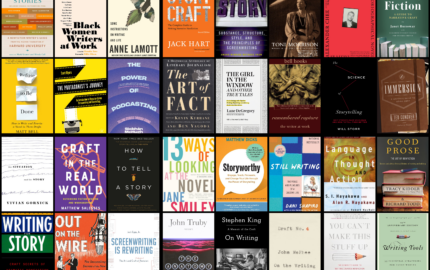EDITOR’S NOTE: In a series on making “good trouble” through journalism, Paul A. Kramer of Vanderbilt University argues for seven approaches that can help create partnerships between writers and readers to address social problems. From his introduction: “The best narrative non-fiction writing on social problems … grapples with a particular social reality in order to question it, subject it to critical attention and convince readers that its existence and continuance is not inevitable.”
The seventh and final of the re-frames focus on value-switching: shining a light on a situation in ways that helps the public see it through in new ways. Additional approaches will be posted this week and next.
Let’s look at this problem from a different moral stance.
Of all the projects I’ve suggested as a way to reframe social issues journalism, value-switching might be the hardest to pull off. Value-switching involves things that readers approach through the prism of particular moral frameworks, and the writer hopes they might come to see them by the light of different ones.
It doesn’t mean hammering readers with the need for new values: It’s well-established that the more an author confronts or seems to threaten peoples’ value commitments, the more likely they are to dig in as a matter of perceived self-defense.
Instead, value-switching unhooks a social reality from the prevailing moral framework that surrounds it and tries to lodge it somewhere else. The writer may not depict the moral frame itself as the problem; it has just been misapplied to the issue at hand. In its place, the writer makes the case that readers should highlight a different set of values instead, one that readers may already possess in subdued or latent forms. If there’s a shorthand phrase for value-switching at work, it’s something like: “Yes, x is important as a value, but that’s not actually what’s at stake when we try to make sense of y.”
In this respect, value-switching can be closely allied in practice with re-specification. By representing a situation in a new and perhaps startling way, the author can make it easier for readers to apply a different facet of their moral vision to it. As it detaches from the values that previously gave it meaning, readers may opt to move it elsewhere on their moral terrain.
There are better and worse ways to do this. The best work exhibits thoughtfulness of value landscapes in all their complexity. What commitments might readers already hold that could enable them to see social realities in a new light? Successful value-switching also conveys that it’s understandable that the problematic moral frameworks have been applied; perhaps these approaches are ones the writer also began with.

Sarah Stillman’s “The List,” a 2016 New Yorker investigation into the dysfunctional and abusive character of publicized sex offender lists, provides a demanding example of value-switching. Stillman is on difficult ground; readers are likely to have visceral reactions to the sexual abuse of children and seemingly well-intentioned measures put in place to prevent and punish it. But through painstaking research, she uncovers ways that such lists not only fail to protect children but also stigmatize innocent people, including many children, whose futures they destroy.
One of Stillman’s central protagonists is Leah DuBuc, a woman from Michigan who was thrown onto the sex offenders list for mimicking sex with her step-siblings as a 10-year-old, imitating what she’d seen in some movies. “Throughout her first semester in college, she was dogged by fears of being outed,” Stillman writes. Her boyfriend invites her to his home for winter break, and she explains to him, sheepishly, that she needs to stop and register with local police or face a felony charge. “Her boyfriend parked in the lot of the Brighton Police Post,” she writes. ““I’m here to fill out the paperwork,’ DuBuc told the trooper at the front desk. ‘I’m a registered sex offender.’ ‘We don’t serve your kind here,’ he replied. ‘You better leave before I take you out back and shoot you myself.’”
In an adept, value-switching move, Stillman says to readers that no one is questioning the urgency of protecting children from sexual abuse. But that is not what is at stake here, as even some victims’ rights advocates come to concede in her piece. What is at stake instead is the value of protecting people from fairly arbitrary, technologically streamlined, total exclusion from society.
The primary danger here is that the author challenges readers’ values in ways that provoke them to entrench themselves where they are. And readers might not be completely wrong in suspecting that, when asked to apply a different set of values to a thorny situation, they are actually being asked to rethink their actual values; After all, doesn’t a key part of a value system consist of the ways it’s applied?
But when it’s done well, value-switching can create openings for readers to rethink the ways they connect social realities to specific values; as it achieves this, it can magnify the prominence, utility and authority of the values being invoked.
Related Posts
Introduction: Making good trouble
I. Exposure: Highlighting overlooked problems
II. Urgency: Revealing the immediacy of problems
III. Activation: Challenging a sense of powerlessness
IV. Re-specification: Reconsidering causes and effects of a problem
V. Solidarity: Standing with those affected
VI. Responsibility: Connecting action to consequence
VII. Value-switching: Considering different moral stances
Conclusion: The gift of narrative nonfiction
NEXT: Conclusion: The gift of narrative nonfiction
***
Paul A. Kramer is an associate professor at Vanderbilt University, where he teaches history and non-fiction writing. He is the author of several academic studies and essays that have been published by major news sites. His book, “The Blood of Government,” has won several awards, including being named a finalist for the Philippines National Book Award in the social science category.



